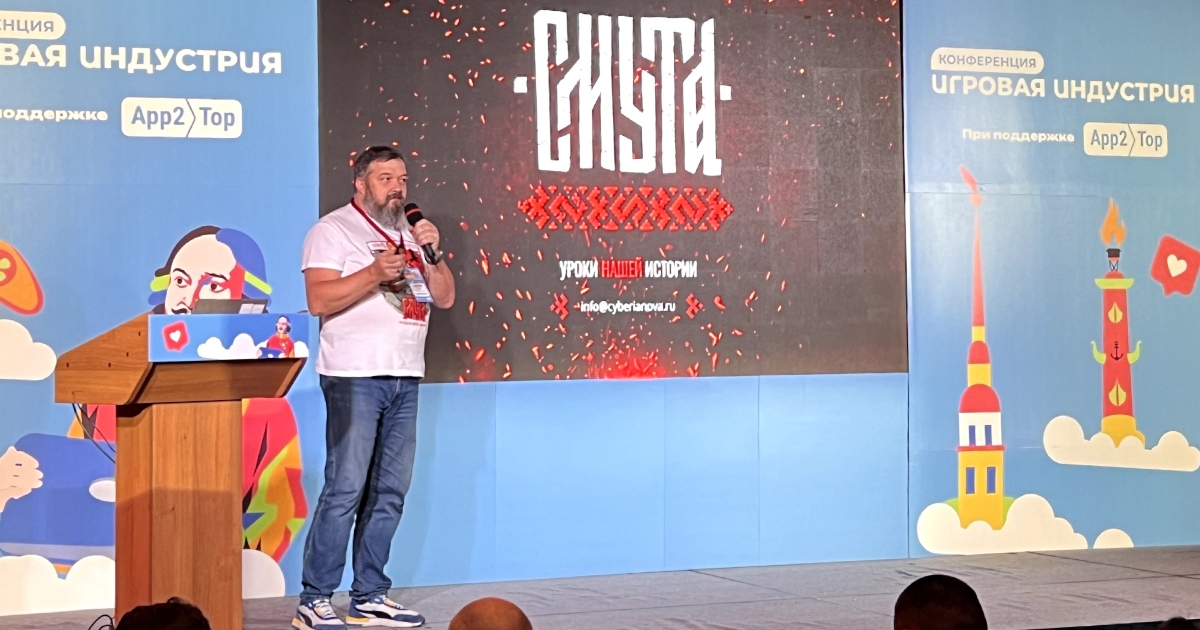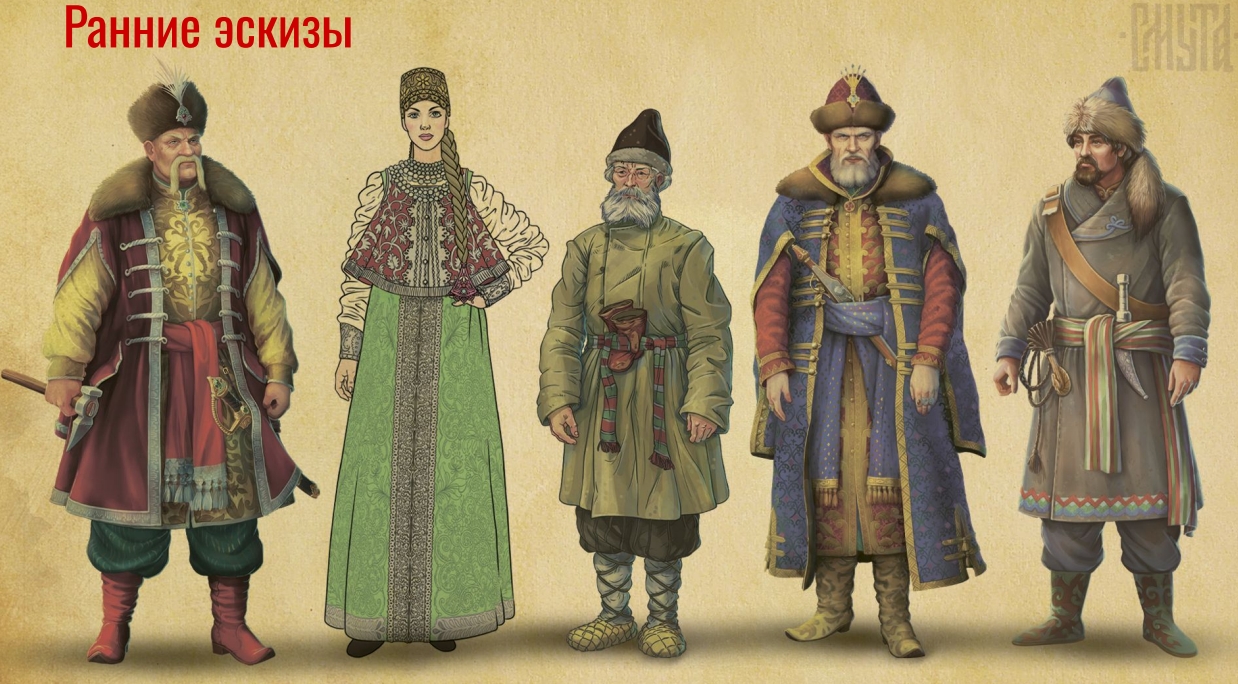One of the speakers at the "Game Industry" conference was Alexey Kopcev, CEO of the studio Cyberia Nova. He spoke about the development of "Smuta," the organization of processes within the company, and the conclusions the team made after the release.
Alexey Kopcev at the "Game Industry" conference
The History of Cyberia Nova and the Pre-production of "Smuta"
At the beginning of his speech, Kopcev shared some introductory information about the studio and the origination of the idea for "Smuta":
- At the start in 2015, Cyberia Nova had only seven employees — since then, the staff has grown to 62 employees;
- In the early years, the team made various prototypes on Unity, and the genres ranged from MOBA to tactical shooters;
- The idea for "Smuta" appeared four years ago ("Initially, we were aiming for Musou-style games like Dynasty Warriors," Kopcev surprisingly recalls);
- Eventually, it was decided to abandon this concept and focus on the historical aspect (around that time, Cyberia Nova found the novel "Yuri Miloslavsky, or The Russians in 1612" and chose it as their source of inspiration);
- Pre-production took a year and a half funded by the studio's own resources: the studio visited various museums, studied historical data, and created the first concepts;
- The project's main goal at the early stage was to spark young people's interest in studying Russian history;
- In 2022, Cyberia Nova presented all their work to the Institute for Internet Development (IID), eventually receiving a grant.
"The work was different from the way the media described it — like a truckload of state money arrived, as Kopcev notes. "Everything went by the post-payment scheme: first, we show results, then receive the next portion of the funds."
The Development of "Smuta" and the Choice of Unreal Engine 5
- The company used the Scrum framework with two-week sprints, and the teams were divided by specialization (game design, art, narrative, etc.);
- During production, the studio focused on "bottlenecks," moving from the most labor-intensive elements to simpler ones;
- In creating gameplay, Cyberia Nova adhered to an iterative approach: short iterations with clear goals → task completion control → iteration analysis → improvement of a specific gameplay element.
- The studio's artists not only studied the original novel but also worked with historical consultants to ensure the accuracy of weapons, clothing, and locations;
- The team used "ref boards" when working on character appearance and interface, as well as in creating game mechanics and other elements;
- Kopcev also noted that the studio plans to provide its own graphical assets in the 15th-17th century style to other Russian developers. The team is currently working on selecting a platform for publishing the materials;
- Responding to criticism about using ready-made assets, Kopcev noted: "People who said this probably didn't even try to look for assets of old Russian structures";
- The choice of Unreal Engine as the graphics engine was driven by its technological capabilities: the lighting used the Lumen system, shaders were developed using PBR, and game locations and characters were created using Megascans and MetaHuman;
- According to Kopcev, "the risk was high, but we went for it to optimize and quickly solve technological tasks: lighting setup, lip sync, etc.";
- To create animations and game logic for "Smuta," C++ and the built-in UE visual programming language Blueprints were used, and the Behavior Trees tool was used for the AI of game characters.
Conclusions
- Speaking about the release of "Smuta" and the criticism of the game, Kopcev emphasized that the project received a significant public response ("no one is indifferent");
- One of the key takeaways mentioned during the speech was: "Two years to develop an AA game is very, very little. Essentially, with the patches we are releasing now, we are finishing our project";
- According to Kopcev, the complexity also lay in the state financing of "Smuta." The company had to strictly adhere to the set deadlines — there was no room for delaying the release. The problem also stemmed from the fact that the authorities initially did not consider the specifics of game development, applying funding principles from other fields;
- "The state system as a whole is very cumbersome," notes Kopcev. "If a two-year regulation is set in a competition, there's no getting around it. But, to our great joy, IID will be adjusting this aspect";
- The CEO of Cyberia Nova added that despite all the problems, the company eventually managed to establish "effective work with state bodies." How exactly IID will adjust its approach to working with game developers remains unclear;
- The studio's current plans include continuing to release educational modules for "Smuta" and expanding the team for future projects.





